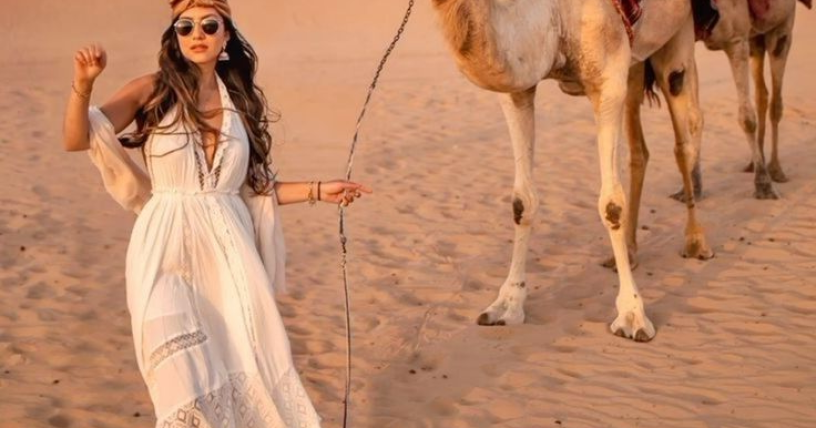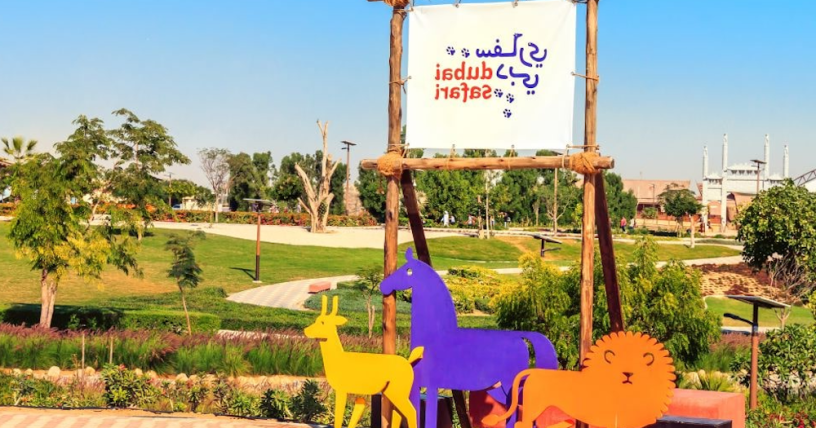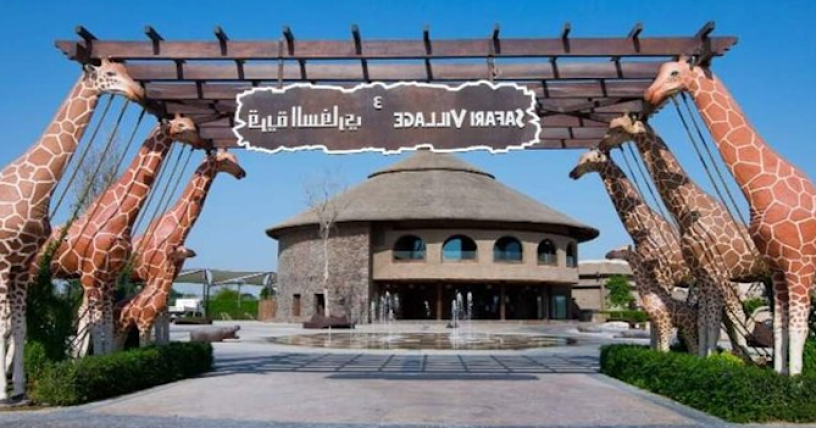Dubai Safari Park is a research and conservation complex that opened in 2017. It cost 270 million dollars to build. The area of the complex is 119 hectares. For the animals living on the territory, a habitat close to the natural one has been created. There are 3,000 species of animals and 250 species of birds in Dubai Safari Park.
What to see in the park
There used to be a dump on the territory of the Safari Park. Then the dump was liquidated and a zoological park was built in its place. Construction began in the summer of 2014 and was completed in the summer of 2017. The animal world of the UAE is not characterized by great diversity, so the opening of the park became a cultural event. The latest technologies were used to create the complex. A special system regulates the temperature of rocks, cools water tanks, stones, creates fog, and works on the energy of solar batteries. All structures are built of environmentally friendly materials.
Dubai Safari Park is not a zoo in the usual sense (although it is sometimes called “Dubai Zoo”). Here animals and birds are not just shown for money, they are studied and comfortable conditions for living and breeding are created. Much attention is paid to the physical and psychological condition of the pets. Animal care courses are constantly held on the territory of the complex. This is especially useful for children. Here they learn about the habits, peculiarities and needs of wildlife.
Photo hunting underwater deserves a special mention. You can rent a special camera here in the park. Swimming hippos serve as photo subjects.
The park has themed days such as World Panda Day, International Frog Day, etc.
By visiting the complex, you will be able to:
- see the largest collection of reptiles in Dubai;
- Take a safari walk in an area where predators roam freely;
- feed a giraffe;
- see the Asian black bear, also known as the moon bear;
- meet the monkeys, who mimic human behavior very well;
- see the Komodo Varan and the white lion, the only one in the Emirates;
- see hippos dancing underwater;
- Take the longest bird aviary walk in the UAE;
- Visit the largest open-air theater in the Emirates for animal shows;
- visit a petting zoo;
- get your own pictures taken by a professional photographer or souvenirs on the way out of the park.
In the future, the Safari Park is going to be listed in the Guinness Book of Records as the largest. This is another reason why you should definitely visit it. The reserve complex created in Dubai can serve as an example for other countries. Its main task is to preserve wildlife in all its diversity.
What animals live on the territory of the complex
The complex is divided into 4 zones:
- Arabian Village;
- African Village;
- Asian Village;
- Explorer Village.
In addition, there is also the Al Wadi sector, where you can relax and have lunch, and a petting zoo.
All zones are decorated differently, so in addition to animal photos, you can take your own photos in different cute locations. Each zone has food and drink stands, restaurants and restrooms.
The zones are located at a considerable distance from each other. To get from one to the other, you can walk or ride a special steam train.
Arab village
It is from this part of the park that the tour begins. You can move around the territory of Arabian Village on a mini-train. Visitors are accompanied by a guide who tells amazing facts about the animals. Near the cages there are posts on which you can read information about the animals in English or Arabic.
The Arabian Village is home to ostriches, chamois, gazelles, mouflon, Arabian wolves and other animals and birds, many of which are no longer found in the wild.
African Village
African Village features mostly African mammals, from the tiny meerkat, which lives in the desert areas of Africa, to the African elephant.
African Village has islands with monkeys and lemurs. You will see all the primates of Africa, led by gorillas and chimpanzees. Visitors have the opportunity to watch pygmy hippos swimming underwater through glass. And at lunchtime, you can watch antelopes roaming the pasture. You can also rent a children’s mini-car.
African village inhabitants that are a must-see:
- the lesser flamingo;
- great flamingo;
- okapi;
- Komodo dragon;
- the ring-tailed lemur;
- black and white lemur, etc.
Komodo dragons and okapi deserve special attention.
Komodo dragon is a giant Indonesian varan, the largest lizard in the world. Its size ranges from 2.2 to 2.6 meters, with an average weight of 50 kg. Its body is covered with plate-like scales. This animal has no vocal cords, so it can only make hissing sounds. Komodo dragons have considerable strength: when hunting, they can break the legs of an ungulate with a blow of their tail. The Komodo dragon is poisonous: two glands in its lower jaw are capable of producing poison that causes paralysis in the victim.
The Okapi is otherwise known as the forest giraffe. Actually, they are referred to the relatives of giraffes. The length of the adult body reaches 2 meters, weight – 250 kg. The only place in the world where these animals live is the tropical forests of Central Africa. There they live at an altitude of more than a thousand meters, in a humid climate zone, so their fur has water-repellent properties. The okapi feed on leaves and shoots of milkweeds.
Asian Village
Asian Village is not just a zoo, but a real theater where you can see a performance from the life of animals and birds in their natural habitat. There are usually 5 performances a day. The zoo staff will be happy to tell you about each animal, its habits and peculiarities. At the same time, they will not interfere with what is going on.
Here you can meet Asia’s largest ape, the orangutan. Guests will also be able to see in the Asian village a gibbon, which likes to swing upside down on tree branches, a panda, an Ussuri bear, black or with an unusual “moon collar” (because of which such bears are called Moon Bear), and other exotic animals and birds.
Explorers’ Village
This area differs from the others in that the animals are not housed in enclosures, but live freely throughout the area. Visitors to the Explorer Village have the opportunity to see how animals live in their natural habitat. For example, you can see a village of hippos or a canyon of baboons living in groups of 50-70 animals, watch zebras and giraffes in the pasture. The bus, on which tourists travel, drives right into the reservoir where hippos and crocodiles swim.
An armored jeep is used during the trip. The excursion lasts 45 minutes. Visitors are accompanied by a guide who talks about the inhabitants of the complex and their habits in English.
Explorer Village is home to the largest lion pride in the UAE (a group of lions, usually consisting of several females and one or two lions). The lions, resting on large, artificially cooled stones, usually leave no one indifferent.
There is a bird theater on the territory. Here visitors of the Safari Park can get acquainted with tame crows, pigeons, large parrots.
There is also an opportunity to rent a children’s mini-car.
Al Wadi
Al Wadi is a recreational valley. Here you can relax and have a snack by the picturesque lake, in specially designated picnic areas. There are also numerous cafes, restaurants, fast food stands and souvenir shops.
Contact Zoo
A contact zoo, or, as it is otherwise known, a children’s farm, is a place where children can get to know, touch and feed non-dangerous animals.
How to get there
If you are wondering how to get to the safari park in Dubai, first of all you should remember that it is located far away from metro stations and bus stops. The nearest bus stop is Dragon Mart, and then you need to get there either by cab or by rented car. You can use an app to hail a cab. Uber is available in Dubai.
The cab fare will be:
- AED 45 from Rashidiya Metro Station;
- AED 25 from Dragon Mart.
The park’s address is Al Warda 5, Aweer Road.
The nearest metro stations are Rashidiya (red line) and Etisalat (green line).
Ticket prices
Tickets to Dubai Safari Park are best purchased well in advance on the park’s website, as they sell out very quickly. There are two types of tickets:
- simple;
- full (combo).
Buying a simple ticket will take you to the Arabian, African and Asian villages as well as Al Wadi. However, the safari trip is not included in the ticket.
The price of a simple ticket is AED 75 for adults and AED 45 for children under 12.
If you buy a combo ticket, you can visit all corners of the park, as well as ride an off-road vehicle.
The price of the combo ticket is AED 105 for adults and AED 75 for children under 12 years old.
The entrance ticket is valid for 1 day. Attractions in the “Adventure Valley” are not included in the ticket price, they are paid separately. Meals are also not included in the ticket price. You should keep in mind that parking at the Safari Park is also paid: 50 dirhams.
Useful tips
Dubai Safari Park has a dress code: knees and shoulders must be covered or you may be stopped at the entrance.
To enter, present your e-ticket – as long as the barcode is clearly visible.
No food or drinks may be brought in. Alcohol is also prohibited.
Pets are not allowed on the premises.
Free wi-fi is available throughout the park. Please ask the park staff for the password.
There are no lockers, but you can leave unnecessary items at the reception desk.
There are no ATMs or exchange offices in the park, so it is better to take care of cash in advance (only Dirhams are accepted).




